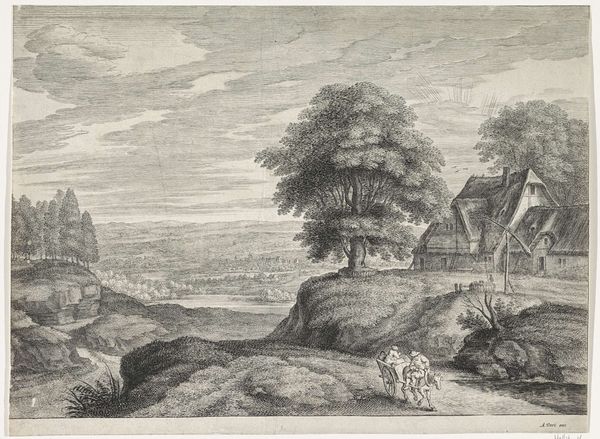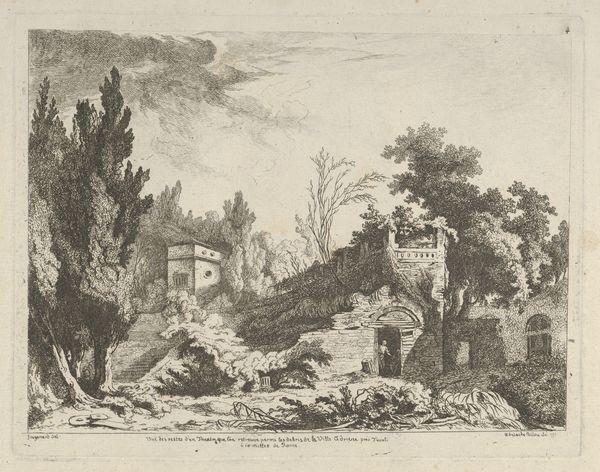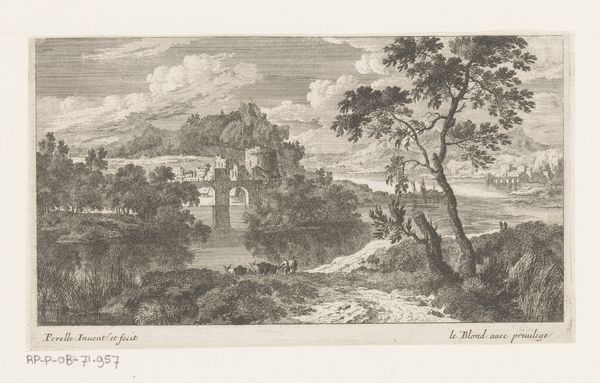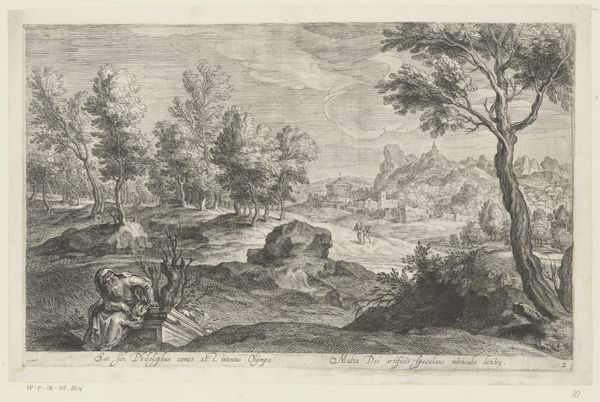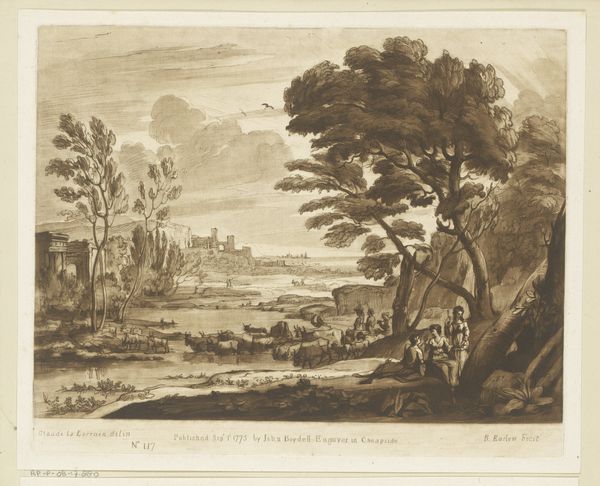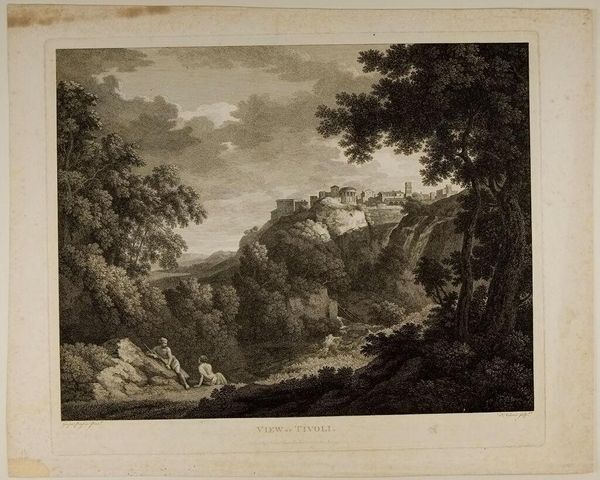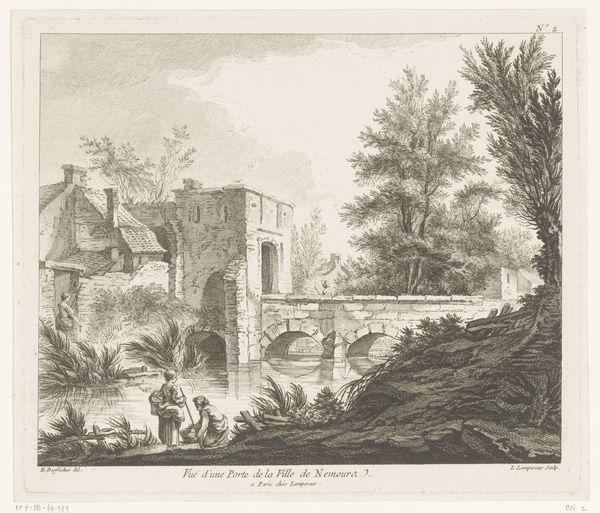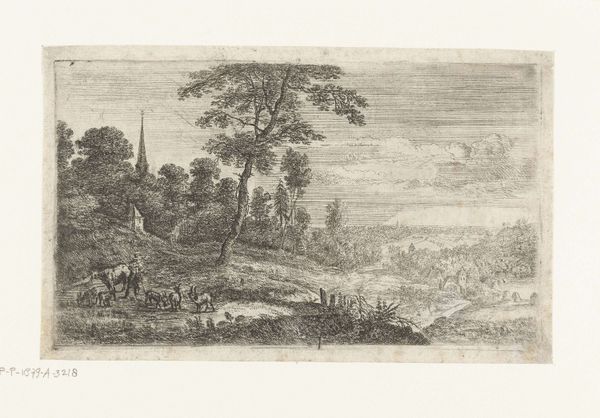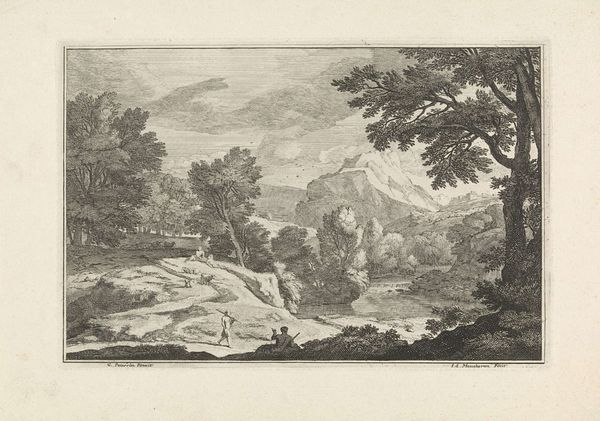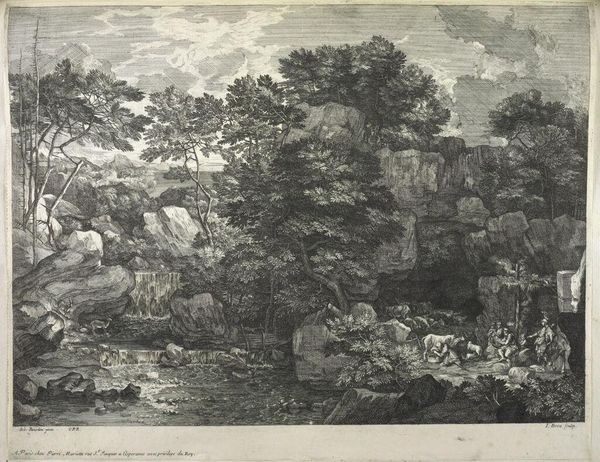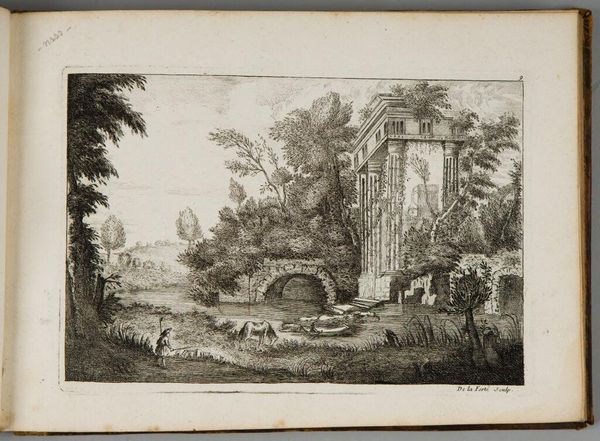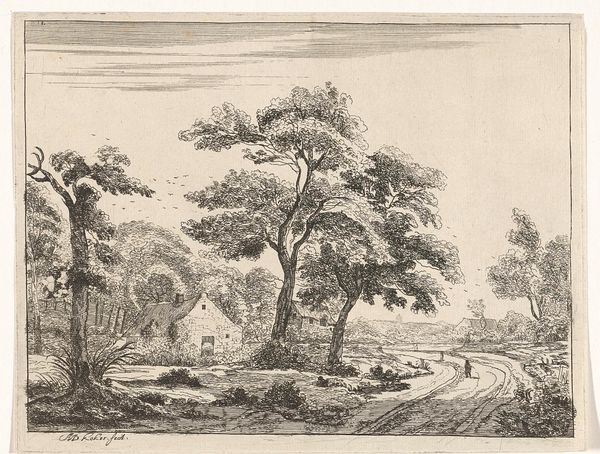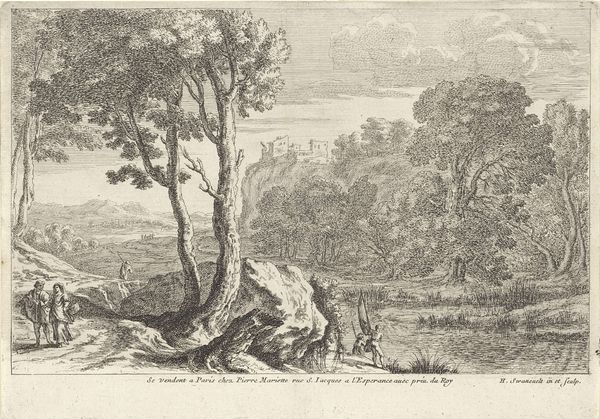
print, etching, engraving
#
baroque
# print
#
etching
#
old engraving style
#
landscape
#
line
#
genre-painting
#
engraving
Dimensions: height 169 mm, width 255 mm
Copyright: Rijks Museum: Open Domain
Curator: This etching, "Landscape with a Shepherd and his Flock," by Isaac de Moucheron, likely dates from the late 17th to mid-18th century. It's currently part of the Rijksmuseum's collection. The intricate lines really strike me. Editor: It feels meticulously crafted, almost like a staged tableau vivant. The idyllic shepherd scene contrasts starkly with the imposing rock formation behind them; there's an inherent tension there. I immediately think about representations of labor. Curator: Absolutely. Let’s consider Moucheron's process. The engraving medium, requiring skilled craftsmanship and specific tools, dictates a precise method of production and, ultimately, consumption. Who was purchasing these prints, and why? How were they used? Editor: I’m thinking about the idealization of rural life that this artwork presents, the genre-painting aspect of it. While depicting labor, it certainly romanticizes it, presenting it in a very specific, perhaps even propagandistic, light, far removed from the realities faced by actual shepherds. Who benefits from this type of idealization? Curator: That's a valid point. We must examine the socio-economic context. Etchings like this were often produced for a growing middle class eager to display refined tastes. The consumption of this idyllic scene speaks to a specific cultural aspiration. Editor: Exactly. These idyllic scenes conveniently mask the harsh realities of labor exploitation that enabled the burgeoning middle class lifestyle. It creates a powerful narrative while simultaneously silencing the lived experiences of the working class. The artificial, theatrical elements only reinforces this constructedness. Curator: We also cannot forget that etching, with its reproducibility, allowed for widespread distribution of imagery. Consider the very material: metal plates, acid baths, paper – a complex process of extraction, creation and reproduction. Editor: Right. And the choices Moucheron makes in his technique – the linear, old engraving style– further reinforces an established narrative. The scene feels familiar and comfortable precisely because it echoes existing, dominant ideologies. It doesn't challenge or subvert, but reinforces. Curator: By examining both the technical production and the social implications, we gain a much richer understanding of this piece. It’s not just a pretty landscape; it's a carefully constructed artifact that participated in shaping a specific cultural understanding of labor and leisure. Editor: I agree. This deep dive, intertwining both the material process and the social implications, forces us to actively question the messages this seemingly serene landscape conveys.
Comments
No comments
Be the first to comment and join the conversation on the ultimate creative platform.

